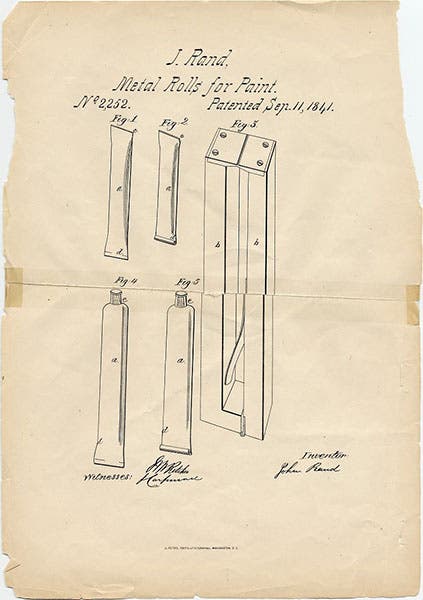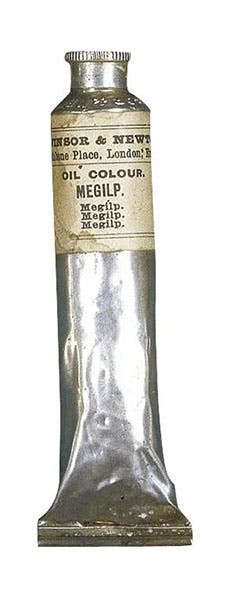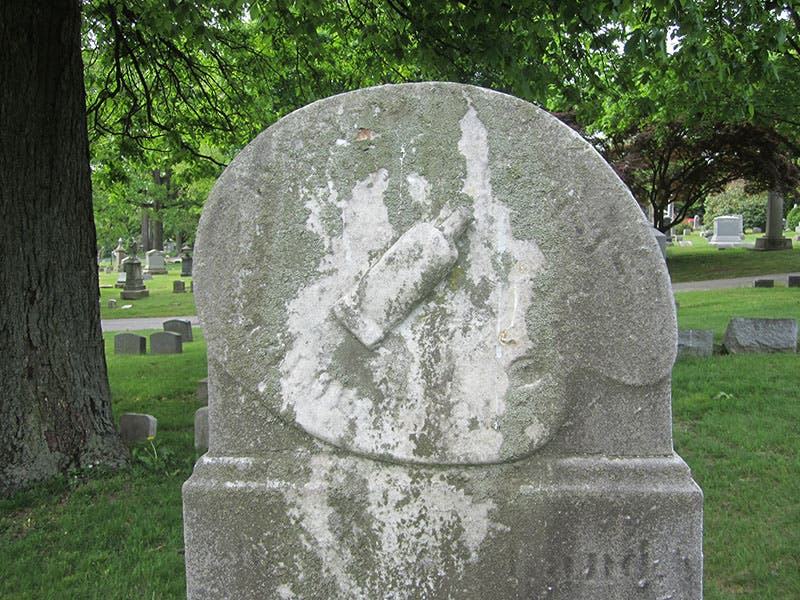Scientist of the Day - John Goffe Rand
John Goffe Rand, an American portrait painter, died Jan. 21, 1873, just short of his 72nd birthday. I am not sure Rand was a great portraitist. The National Museum of American Art has only one painting by Rand, his self-portrait (first image), and the National Portrait Gallery in Washington D.C. has none at all. Nor do we find any of his paintings in London museums, where he spent fifteen years of his productive life.
But Rand was a terrific inventor. In 1841, he received a U.S patent for a collapsible tin paint tube. Painters before Rand typically stored their mixed paints in either pig bladders, which you had to stab with a syringe to get at the paint, or glass tubes with screw-on caps, which also required a syringe to access the pigments. And the syringes had to be cleaned at once. Rand also used tubes with screw caps, but his were collapsible, squeezable, metal, so it was ridiculously easy to squeeze a dab onto your palette and then screw the cap back on the tube, keeping the remaining pigment fresh.
It is interesting that Rand secured a U.S. patent, because at the time he was living in England and painting portraits, successful enough to make a living. And he never did market his tin tubes in the U.S. But he did attract the attention of the venerable English artist supply firm of Winsor & Newton, which immediately started marketing their paints in Rand tubes, such as the one we see here (third image). There are many photos of Winsor & Newton paint tubes online, but I found none that could be reliably dated to the early 1840s. So I chose one that was undated, but large and clearly labelled.
It is often said that Rand’s invention of the metal paint tube made Impressionism possible, since artists could now take their paint tubes with them and paint spontaneously in the open air. Auguste Renoir is usually quoted as having said something to that effect. In fact, artists had been painting en plein air for several decades, especially in France, and I suspect that portable easels and paint boxes were just as important as the paint tube in allowing painters access to the countryside. Still, it was a better way to store and access pigments that any previous method of paint storage, and the tin paint tube soon became the standard method of selling and using artists’ paint. Indeed, it is hard now to buy artists’ paints any other way.
Between his portrait business and his invention, Rand became quite wealthy, but he invested most of his nouveau richness in an idea for an Aeolian pianoforte – a piano with reeds attached to the strings so that the tones will resonate longer. The venture went nowhere, and he lost all of his money, and he even had to sell the patents for his tubes, so that when paint tubes were finally manufactured in the U.S., someone else pocketed the profits. Rand finally returned to the land of his birth in the 1840s and ended up in New York City, unconcerned apparently with his wild ride on the wheel of fortune. He painted portraits until his death. He is usually described as being successful, even though few of his portraits have ended up in museum galleries. My guess is that he painted ordinary people, and, alas, only portraits of the rich and famous make their way into museums. Unless you are being painted by Mary Cassatt or one of the Peales.
Rand was buried in Woodlawn cemetery, in the Bronx. It is difficult to read any lettering on his gravestone. But the paint tube in relief at the top (fourth image) is more than enough to identify the occupant of the grave.
Dr. William B. Ashworth, Jr., Consultant for the History of Science, Linda Hall Library and Associate Professor emeritus, Department of History, University of Missouri-Kansas City. Comments or corrections are welcome; please direct to ashworthw@umkc.edu.









